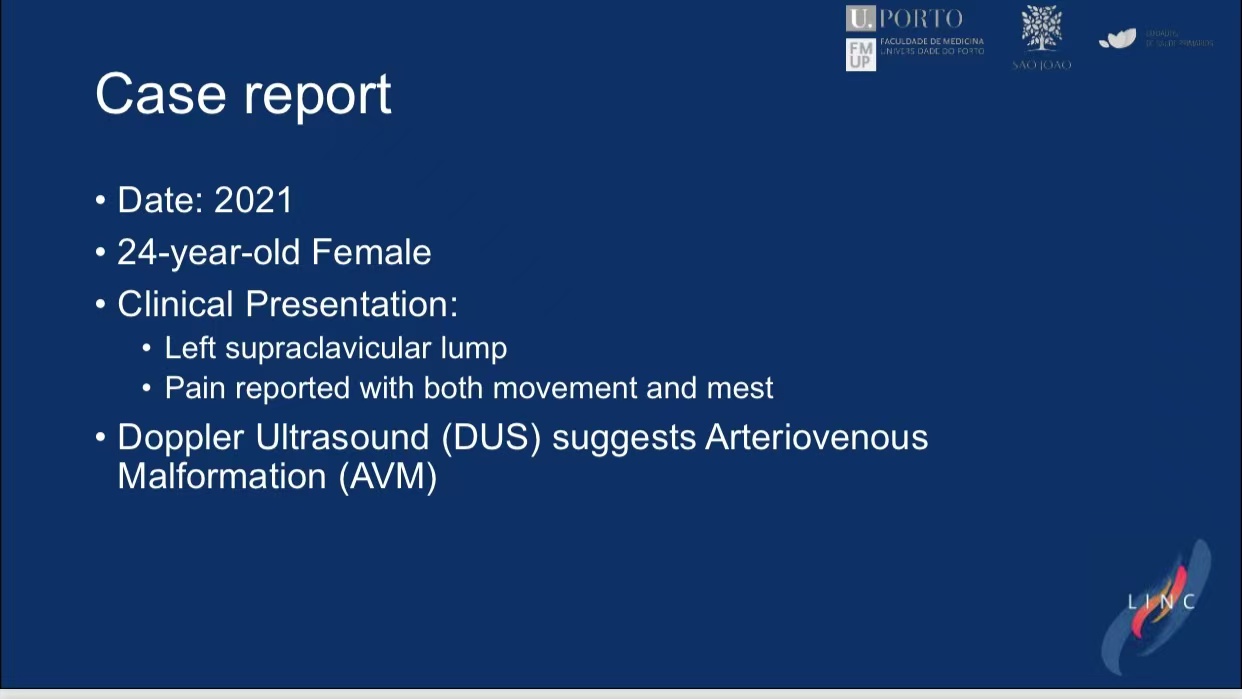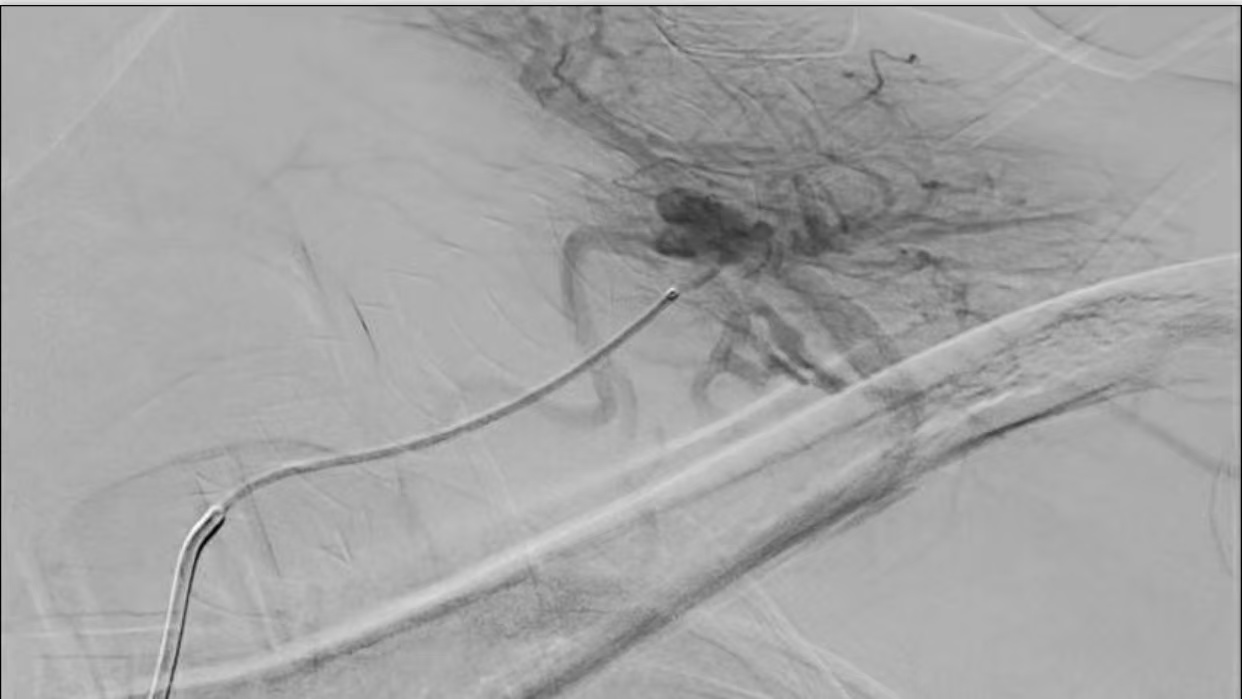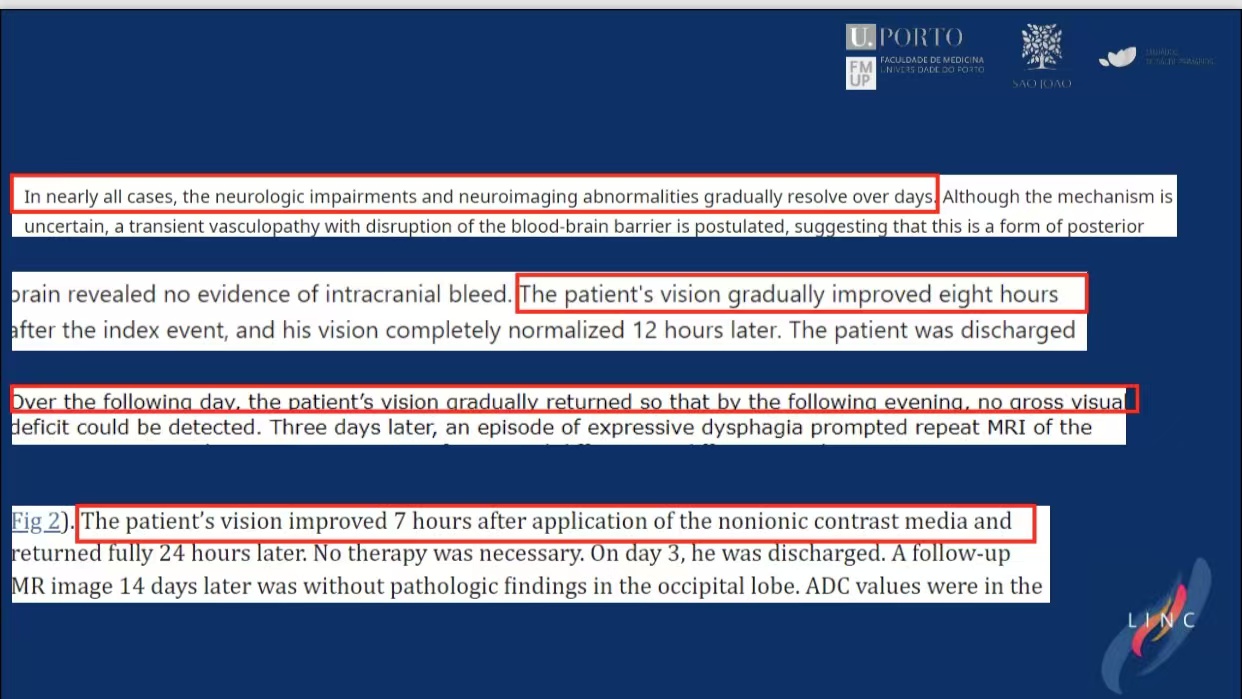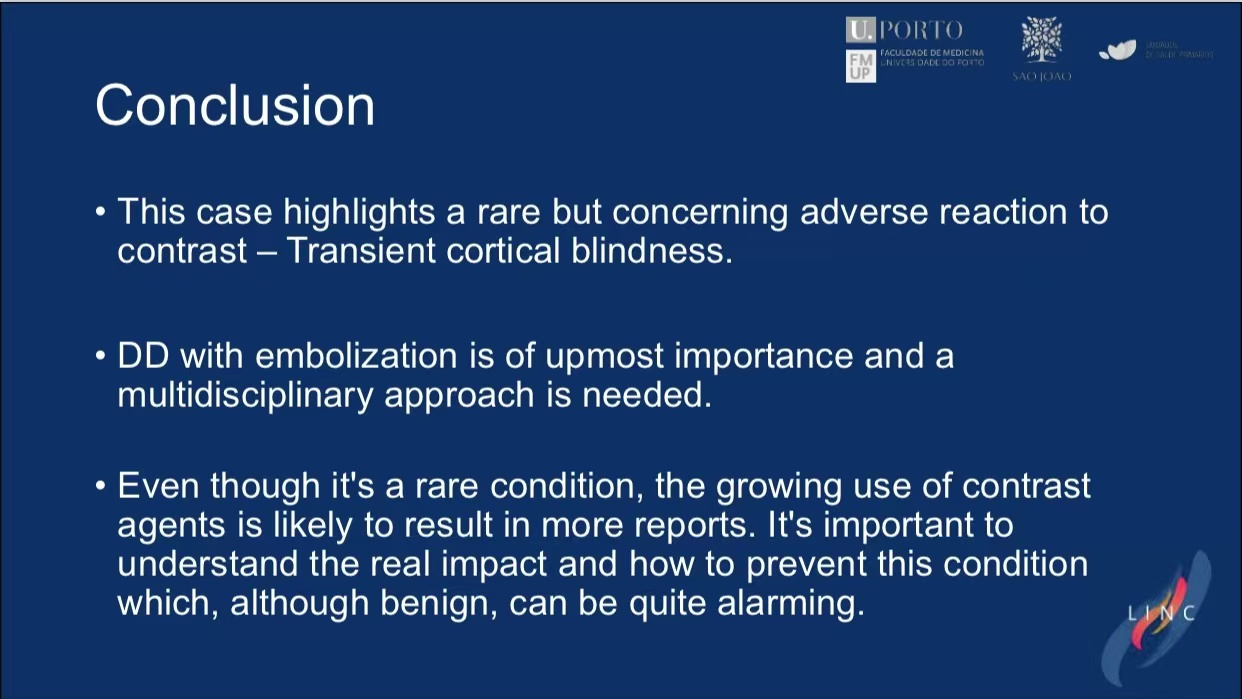Presenter: Tiago Costa-Pereira
Hospital: ULS São João, Porto, Portugal
Summary
A 24-year-old female with recurrent supraclavicular AVM developed transient cortical blindness post-Onyx embolization. Neurological and ophthalmological evaluations ruled out thromboembolic events, attributing vision loss to contrast-induced blood-brain barrier disruption. Vision fully recovered within 24 hours, underscoring the need for contrast toxicity awareness.
Introduction
Onyx embolization is a mainstay for AVM treatment, yet contrast-related complications like transient cortical blindness are underrecognized. This case elucidates diagnostic challenges and management protocols.

Case analysis
Clinical Profile: Recurrent supraclavicular AVM with pain exacerbation.



Procedure: Onyx embolization complicated by transient vision loss.


Management:
•CT ruled out thromboembolism; diagnosed as contrast-induced cortical blindness.

•Supportive care led to full visual recovery within 24 hours.

•Mechanism: Hyperosmolar contrast disrupted occipital cortex blood-brain barrier.

Conclusion
Contrast-induced cortical blindness, though rare, mandates differentiation from thromboembolism. Limiting contrast volume and post-procedural monitoring are critical.



